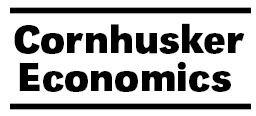Agricultural Economics, Department of

Cornhusker Economics
Date of this Version
4-1-2020
Document Type
Newsletter Issue
Abstract
The United States Department of Agriculture, Risk Management Agency (RMA) partners with private insurance companies to deliver the federal crop insurance program through agents who sell policies directly to producers. The government subsidizes producers in the form of premium discounts and reimburses private insurance companies for administrative and operating (A&O) costs. The government provides further assistance to the industry by offering a cooperative reinsurance agreement that reduces loss exposure for insurance companies (Appel and Borba, 2009).
Subsidization of private market players may facilitate rent-seeking behavior—efforts to capture larger shares of tax dollars devoted to the program— especially in the settings of asymmetric information, moral hazard, and adverse selection which typically characterize crop insurance markets (Glauber, 2012; Lusk, 2016; Smith, Glauber, and Dismukes, 2016). Ker and Ergun (2007) show that insurance companies can use private information in the reinsurance market to generate excess returns, which go uncaptured by the government’s premium-setting mechanism. Similarly, Coble, Dismukes, and Glauber (2007) show that crop insurance companies take individual policyholder characteristics into account when allocating policies to reinsurance funds—ceding high risk policies to the government and retaining safe policies for themselves. Rejesus et al. (2004) consider the role of the selling agent and find evidence of collusion between crop insurance agents, producers, and insurance adjusters. Our work extends the crop insurance literature by investigating the potential for selling agents to influence producers’ choices of insurance coverage.


Comments
Copyright 2020 University of Nebraska